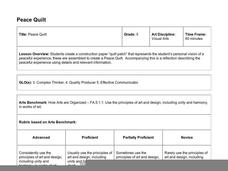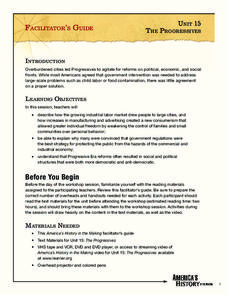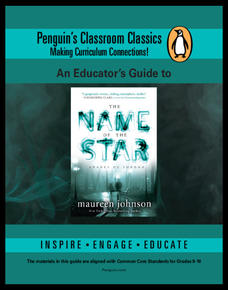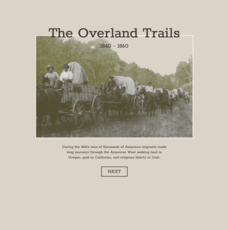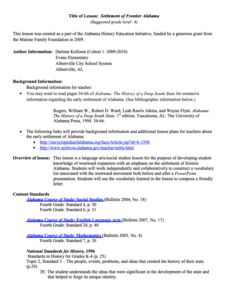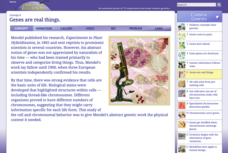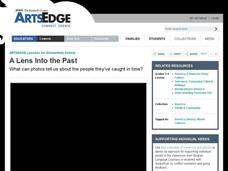Alabama Department of Archives and History
Conflict in Alabama in the 1830s: Native Americans, Settlers, and Government
To better understand the Indian Removal Act of 1830, class members examine primary source documents including letters written by Alabama governors and the Cherokee chiefs. The activity is part of a unit on the expansion of the United...
Alabama Department of Archives and History
Nellie Bly to Dr. Peter Bryce: 19th Century Asylum Reform
What kind of treatment could a patient expect in an asylum during the 1800's? The abusive and neglectful conditions in 19th century asylums are the focus of a lesson that examines the work of reformers Nellie Bly, Dorothea Dix, and...
Curated OER
Charlotte Bronte's Jane Eyre
Did you know that Currer Bell and Ellis Bell were the pseudonyms for Charlotte and Emily Bronte? Did you know that during the 1800s women’s emotional opinions were not seen as something meant for publication? Introduce Jane Eyre...
Hawaiʻi State Department of Education
Peace Quilt
Learners explore color, shape, line, balance, radial symmetry, unity, repetition, and pattern as they make a peace quilt inspired by those made by Hawaiian women in the 1800s. After learning a bit about the history or peace quilts, the...
Learn NC
Buffalo Soldiers
"Stolen from Africa, brought to America,/Fighting on arrival, fighting for survival." Bob Marley's "Buffalo Soldiers" provides high schoolers an opportunity to explore the rich history of the Rastafarians in Jamaica and the Buffalo...
Messenger Education
Snow Goggles and Limiting Sunlight
Why would someone need contact lenses that offer UV protection? With a 28-page packet full of instruction and worksheets, students discuss solar radiation and its potential harm to eyes. They make snow goggles similar...
Annenberg Foundation
The Progressives
The Progressive Era brought about a word that often leads to turmoil—change! Learners research the late 1800s in American history to uncover societal issues gripping the nation back in the day. The 15th lesson of a 22-part series...
Reading Through History
The Slaughterhouse Cases
Do modern citizens interpret the Fourteenth Amendment the way it was intended? Scholars study the Slaughterhouse Cases to see how judges interpreted the amendment in the 1800s. Following the reading on the subject, they answer...
Penguin Books
An Educator's Guide to The Name of the Star by Maureen Johnson
Jack the Ripper terrorized London in the late 1800s. An educator's guide for the novel The Name of the Star places the historical figure in a modern context. Readers complete a pre-reading activity before answering a series of discussion...
University of Richmond
The Overland Trails 1840-1860
What led Americans to head west in the 1800s? Using an interactive map and journals from those who traveled, pupils explore the stories of those who migrated. In addition, they see how the numbers fluctuated in response to the push-pull...
University of California
Impact of the California Missions on Native Americans
While the Spanish claimed to bring civilization to California indigenous peoples, in reality, they also brought violence and forced assimilation to European values. Primary sources, such as the reports of Catholic priests and Europeans...
EngageNY
Analyzing Textual Evidence: Working Conditions in the Mills
Deafening, dusty, debris. Such were the working conditions in the 1800s textile industry as portrayed in Katherine Paterson's novel Lyddie. Scholars watch a short video clip about life and work in the mills. Next, they work...
Alabama Department of Archives and History
Prelude to the Creek Indian War
What was life like as a settler in the 1800s? Get a glimpse of settlers' experiences in Alabama and their relationships with the Native American tribes using an interesting lesson. Scholars complete a hands-on activity, participate in...
Alabama Department of Archives and History
Settlement of Frontier Alabama
What comes to mind when the class imagines settlers traveling out West? The instructional activity teaches pupils about the western frontier of Alabama and what life was like for people traveling West—in wagons with few possessions....
Curated OER
Majestic Murals
Albert Bierstadt is a highly celebrated artist who was able to capture the beauty of the American landscape. The class will first learn how Bierstadt explored America during the 1800s and painted the majestic countryside. Then, they will...
PHET
Generator
Michael Faraday was self-educated, earned an honorary doctorate from the University of Oxford, invented the first Bunsen burner, discovered the laws of electrolysis, and proved that a changing magnetic field produces a current. In this...
NET Foundation for Television
1850-1874 Native Americans and Settlers
Did Western settlers receiving free land from the Homestead Act realize it wasn't really free at all? Scholars investigate the impact Western expansion had on Native American culture in the mid-1800s. They use documents, timelines, and...
NET Foundation for Television
1850-1874 African American Settlers
Go West, young man! Scholars investigate the impact of African American settlers moving to the Nebraska territory, following the passage of the Kansas-Nebraska Act in the mid 1800s. Using primary sources, timelines, maps, and...
NET Foundation for Television
1850-1874 Beef Moves to Nebraska
Just how long was the Long Drive? Learners investigate the movement of cattle in the Great Plains during the mid-1800s. They incorporate photographic, newspaper, video, and primary source evidence into their posters, artwork, and written...
New York State Education Department
US History and Government Examination: January 2016
Looking for an exam that uses primary sources to test young historians' analytical muscles? Check out a standardized test that asks learners to answer multiple-choice and essay questions to demonstrate their understanding of American...
Cold Spring Harbor Laboratory
Genes Are Real Things
Proving microscopic structures exist is a difficult task. Learn how scientists did just that in the mid-1800s as they set out to identify the cellular structures related to genetics. The online lesson explains the collection of work that...
PBS
Extranjeros and Expansion
A three-part lesson plan gives light to the Unites States expansion from the view of Texans, New Mexicans, and Californians. Through videos and written activities, scholars work collaboratively to research specific individuals and their...
K20 Learn
American Exclusivity: The Chinese Exclusion Act
The Chinese Exclusion Act—the first race-based immigration restriction—is echoed in today's debates on the topic. Using graphic organizers and structured discussions, historians consider the reasons behind the act and compare the...
Curated OER
A Lens into the Past
Explore the history of immigration through photographs. Scholars will view and discuss photographs depicting the culture and lifestyle of late 19th and early 20th century immigrants. They take pictures of current examples of culture in...
Other popular searches
- 1800s History
- Education Reform in 1800s
- 1800s American History
- American in the Early 1800s
- American Immigration 1800's
- American Literature 1800s
- Nationalism in Europe 1800s
- 1800s Music
- Mid 1800s England
- Sectionalism in the 1800's
- Education Reform 1800s
- Old West 1800's



